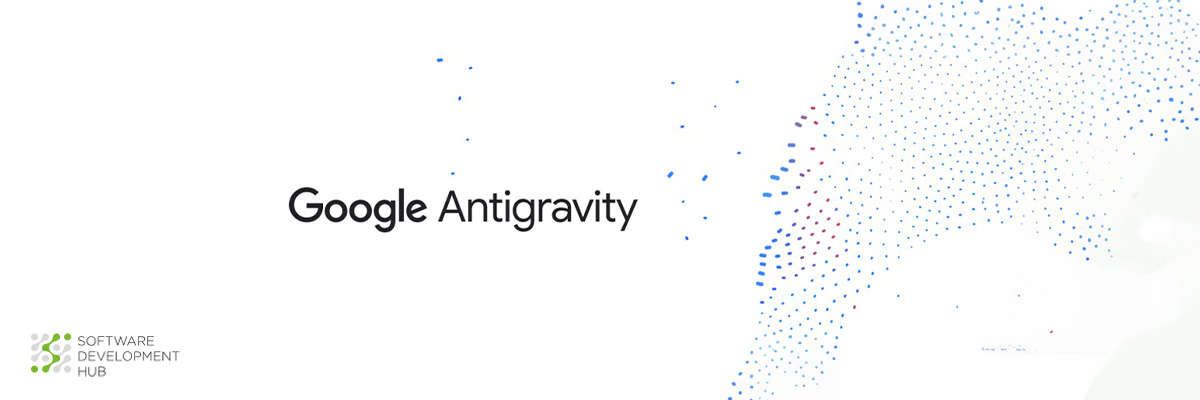MCP vs API: Key Differences and When to Use Each
Model Context Protocol represents a significant shift in how AI systems connect to external services and data sources. Anthropic introduced this protocol in late 2024, specifically designed for AI models to establish a universal connection standard for large language models.
Traditional APIs operate through fixed endpoints, but MCP enables AI agents to connect to resources through runtime negotiation between client and server. This fundamental architectural difference creates contextual, stateful interactions instead of the rigid, static approach that characterizes RESTful APIs.
Understanding when to implement each approach has become essential for developers and system architects working with AI-driven applications. The choice between MCP and traditional APIs depends on specific project requirements, integration complexity, and the level of autonomous decision-making required from AI systems.
Understanding the Basics: What Are APIs and MCP?
API (Application Programming Interface) technology has shaped software development since the 1940s, though RESTful APIs as we recognize them today emerged in the early 2000s. APIs function as communication bridges between software applications, enabling data exchange without requiring knowledge of internal system operations.
API Definition and Use Cases in Traditional Software
An API establishes protocols and rules that define secure application communication. This approach allows developers to integrate existing data, services, and capabilities rather than building solutions from scratch. Traditional APIs expose specific endpoints that applications call to access designated data or functionality.
Enterprise environments demonstrate API ubiquity—the average company now operates almost 1,200 cloud applications. We see common API implementations across several areas:
- Record reconciliation across systems (updating Salesforce when Stripe payments process)
- Cross-application notifications (Slack alerts for new HubSpot registrations)
- Process automation through webhooks
- Authentication and authorization services
- Monitoring and analytics data collection
What is Model Context Protocol (MCP)?
Model Context Protocol (MCP) represents an open-source technical standard specifically engineered for AI model connections to external systems. Anthropic developed and released MCP as an open-source project to address traditional API limitations in AI system integrations.
The key distinction lies in capability discovery. APIs require documentation and endpoint knowledge beforehand, while MCP operates as a self-describing system that enables AI models to discover capabilities dynamically. MCP standardizes AI system interactions with external services through a unified protocol covering resources, tools, and prompts.
The official documentation describes MCP as a "USB-C port for AI applications"—providing standardized connectivity between AI systems and external tools and data sources.
How MCP Works: Host, Client, Server Architecture
The MCP architecture operates through three interconnected components that enable AI model access to external data and functionality:
- MCP Host - The user-facing AI application (Claude Desktop, ChatGPT) that coordinates server connections and manages multiple clients.
- MCP Client - An internal host component maintaining 1:1 server connections. It routes messages between host and server as an intermediary.
- MCP Server - The external component exposing specific tools, data sources, and prompts to AI models. Unlike fixed API endpoints, MCP servers provide JSON-based tool descriptions.
This architecture contrasts sharply with RESTful APIs' stateless design. MCP enables what developers call a "conversational, stateful dance of requests and responses" where both client and server maintain context throughout interactions. The design creates defined security boundaries while facilitating dynamic tool discovery and selection by AI models.
Core Differences Between MCP and APIs
The architectural foundations of Model Context Protocol and traditional APIs create fundamentally different approaches to system integration. These distinctions become particularly important when building AI-driven applications that require contextual understanding and dynamic capabilities.
Communication Style: Stateless vs Stateful
Traditional APIs follow a stateless model where each request operates independently, carrying no memory of previous interactions. This design choice makes APIs lightweight and highly scalable, but creates inefficiencies in complex workflows that depend on contextual information. Each API call must include complete context data, forcing servers to process requests in isolation.
MCP takes a different approach with stateful communication patterns that preserve session information throughout the entire interaction lifecycle. When an MCP client establishes a connection, it receives a session ID that links all subsequent communications. This architecture maintains conversation history, tool results, and resource states across the session, allowing AI models to build upon previous interactions without repeatedly transmitting context data.
Tool Discovery: Static Endpoints vs Dynamic Capabilities
API implementations require developers to study documentation and understand available endpoints before integration. Each service connection demands custom code tailored to specific API structures, creating what the industry recognizes as an "M×N problem" where separate implementations are needed for every service connection.
Model Context Protocol introduces runtime capability discovery that eliminates this complexity. AI agents can query available tools and receive machine-readable descriptions of inputs, outputs, and capabilities. This self-describing characteristic enables models to adapt to new functionality without pre-programming or developer intervention, reducing the integration challenge to a simpler "M+N equation".
Standardization: Custom Integrations vs Unified Protocol
The current API landscape encompasses multiple standards including REST, GraphQL, SOAP, and gRPC, each with distinct patterns and authentication requirements. This diversity requires developers to master different integration approaches for each service.
MCP establishes a single, standardized protocol specifically designed for AI-driven integrations. All MCP servers follow identical patterns regardless of the underlying service they expose. The protocol draws inspiration from successful standards like Language Server Protocol (LSP), which standardized IDE interactions with language-specific tools.
Context Handling: Predefined vs Runtime Context Sharing
Traditional APIs typically require predefined context structures, with client applications managing state externally. Each request must contain complete context information in headers, making complex, multi-step workflows resource-intensive.
MCP prioritizes runtime context preservation throughout the interaction flow. The bidirectional communication model enables continuous context sharing, with both client and server maintaining conversation history. This design specifically optimizes AI workflows where contextual understanding drives meaningful interactions.
When to Use MCP: Ideal Scenarios for AI Integration
The optimal use cases for Model Context Protocol become clear when examining where its architectural advantages create measurable value. MCP fundamentally alters how AI agents interact with systems, enabling capabilities that traditional API integrations simply cannot provide.
Agent Autonomy and Real-Time Decision Making
Model Context Protocol enables AI agents to function with genuine independence rather than simple prompt-response patterns. With MCP, models actively reason about tool selection and execution steps. This capability becomes particularly valuable when agents must make contextual decisions without human oversight. The protocol allows agents to filter irrelevant information and concentrate on essential data, producing more accurate and efficient responses. MCP also supports real-time information processing, allowing AI systems to continuously update their understanding and act on current data.
Multi-Tool Workflows and Dynamic Tool Selection
Complex workflows spanning multiple systems represent MCP's strongest advantage. When agents require access to diverse tools—monitoring systems, alert mechanisms, and record-keeping platforms—MCP provides a unified integration approach. Consider incident response workflows where agents must query knowledge bases, create tickets in issue tracking systems, and post updates to messaging platforms within a single operational flow. MCP enables models to discover and select tools dynamically at runtime, constructing logical execution plans without requiring pre-written scripts for every workflow combination.
Rapid Prototyping with AI Agents like Claude
Development cycle acceleration represents one of MCP's most practical benefits. Developers can validate AI integration concepts without writing custom code. One developer's experience after configuring Claude to use MCP servers for GitLab, Resend, and Tinybird demonstrates this advantage: "It worked like a charm and, without a line of code, it was immediately obvious that it could be easily automated". Twilio's testing revealed MCP's impact on performance metrics: 20% faster agentic performance, increased task success rates from 92.3% to 100%, and compute cost reductions up to 30%.
Model Context Protocol AI Use Cases in Enterprises
Industry implementations demonstrate MCP's practical applications across sectors:
- Healthcare: Agents assist patients and clinicians by retrieving medical records, insurance information, and treatment guidelines from multiple secure systems without exposing sensitive data.
- Financial Services: AI analysts deliver personalized investment recommendations by accessing client portfolios, transaction histories, and live market data through MCP.
- Manufacturing: Supply chain agents coordinate planning decisions using real-time inventory data, shipping schedules, and demand forecasts.
- Marketing: Agents create targeted campaigns by accessing recent purchase data, loyalty status, and inventory information for personalized customer promotions.
The Block financial technology company achieved up to 75% time savings on daily engineering tasks after implementing MCP-powered agents. Bloomberg's MCP implementation reduced time-to-production from days to minutes by providing AI researchers with an expanding toolset.
Security, Scalability, and Maintenance Considerations
Security concerns have escalated significantly with Model Context Protocol adoption. BytePlus research shows a 327% increase in attack vectors targeting MCP systems in recent years. Tool poisoning, a new category of security threat, occurs when attackers embed malicious instructions within tool metadata, enabling manipulation of AI behavior without ever calling the compromised tool directly.
Security Risks: Tool Poisoning and Access Control
Tool poisoning poses unique dangers because attackers can target the entire tool schema—not merely descriptions—as injection points. MCP's stateful nature creates a larger attack surface than traditional APIs, requiring different security approaches. Organizations face the choice between implementing role-based access control (RBAC) or attribute-based access control (ABAC), depending on their specific security requirements.
Scalability: Stateless APIs vs Stateful MCP Sessions
MCP servers encounter distinct scalability challenges due to session-based operations. Persistent connections eliminate computational overhead from context reconstruction, but they scale according to different principles than stateless systems—memory usage increases with active sessions rather than request volume. For basic, high-volume interactions, traditional APIs generally provide superior scalability characteristics.
MCP Gateways: Role in Enterprise Security and Governance
MCP gateways serve as centralized enforcement points for security policies across AI agent interactions. These gateways deliver several key capabilities:
- Centralized registration of approved MCP servers and tools
- Unified authentication through OAuth2/OpenID and SSO
- Policy enforcement including quotas and content sanitization
- Complete logging for compliance purposes
Maintenance: Versioning and Backward Compatibility
Maintaining multiple API versions simultaneously creates substantial costs and operational complexity. MCP offers standardized versioning approaches that allow tool evolution without breaking existing integrations. MCP servers can maintain backward compatibility through request routing to appropriate versions or implementing fallback mechanisms.
Comparison Table
The following comparison provides a structured analysis of the key technical and operational differences between Model Context Protocol and traditional APIs. This reference helps developers and system architects evaluate which approach best fits their specific project requirements.
|
Aspect |
Model Context Protocol (MCP) |
Traditional APIs |
|
Communication Style |
Stateful with maintained session information |
Stateless with independent requests |
|
Tool Discovery |
Dynamic capability discovery at runtime |
Static endpoints requiring prior documentation knowledge |
|
Standardization |
Single unified protocol for AI integrations |
Multiple standards (REST, GraphQL, SOAP, gRPC) |
|
Context Handling |
Runtime context preservation throughout interactions |
Predefined context structures with external state management |
|
Performance |
Not explicitly mentioned for performance metrics |
10-20ms latency, optimized for high-performance scenarios |
|
Ideal Use Cases |
- AI agent autonomy |
- Performance-critical applications |
|
Security Considerations |
- Vulnerable to tool poisoning |
- Mature security practices |
|
Scalability |
Scales based on active sessions, memory-intensive |
Better scaling for high-volume, basic interactions |
|
Implementation Example |
Connects AI models to services like Google Maps, Docker, Spotify |
Average enterprise uses ~1,200 cloud applications |
|
Maintenance |
Standardized versioning with built-in backward compatibility |
Requires maintaining multiple versions simultaneously |
This comparison demonstrates that neither approach universally outperforms the other. The optimal choice depends on specific technical requirements, security constraints, and the intended level of AI agent autonomy within your system architecture.
Conclusion
Model Context Protocol and traditional APIs serve distinct purposes in system integration, with each technology addressing specific requirements and use cases. This analysis has examined their architectural differences, implementation scenarios, and practical considerations for development teams.
MCP offers a specialized approach for AI-driven applications, providing stateful communication and dynamic tool discovery capabilities. The protocol demonstrates particular strength in scenarios requiring autonomous agent decision-making, complex multi-tool workflows, and rapid development cycles. Healthcare organizations use MCP to enable AI agents to retrieve patient information across multiple secure systems, while financial services apply it for real-time investment analysis combining portfolio data with market trends.
Traditional APIs maintain their advantage in performance-critical environments and highly regulated industries. Their stateless architecture delivers consistent low-latency responses essential for high-volume transactions, while established security frameworks support compliance requirements across sectors like banking and healthcare. APIs continue to excel at bulk data processing and offer mature tooling that accelerates development for conventional software integration projects.
Security considerations reveal important trade-offs between the two approaches. MCP's stateful nature introduces novel challenges such as tool poisoning and expanded attack surfaces, requiring specialized gateway solutions for enterprise deployment. APIs benefit from decades of security best practices and compliance frameworks, though they require careful version management across multiple implementations.
The decision between MCP and API implementation should align with specific project objectives. AI-centric applications requiring contextual understanding and dynamic tool selection will benefit from MCP's architecture, while systems prioritizing performance, security compliance, or bulk data operations may find APIs more suitable.
We can expect both technologies to continue evolving as organizations refine their integration strategies. Hybrid implementations may emerge that combine MCP's AI-optimized features with APIs' proven reliability and performance characteristics. Development teams and system architects should evaluate these technologies based on their specific requirements rather than treating them as competing alternatives.
Software Development Hub has extensive experience in AI system integration and API development across healthcare, financial services, and enterprise applications. Our team helps organizations choose the right integration approach for their specific requirements, whether implementing MCP for AI-driven workflows or optimizing traditional API architectures for performance and scalability.
Categories
About the author
Share
Need a project estimate?
Drop us a line, and we provide you with a qualified consultation.







